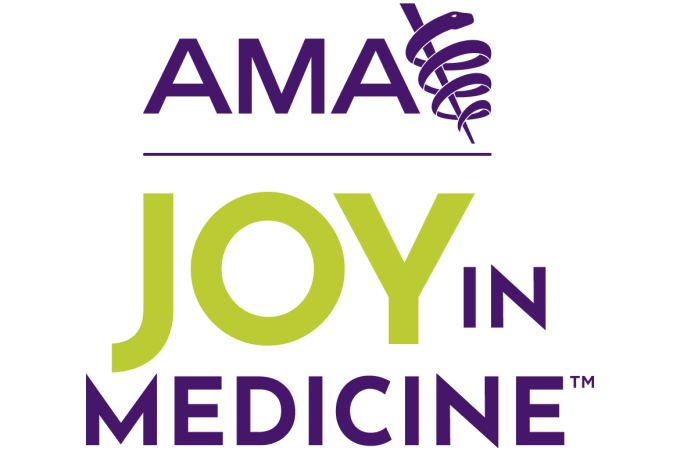Like a particularly high-stakes game of Trivial Pursuit, good physician leadership requires getting more than just one piece of the pie done correctly.
Great physician leaders need to be adept on multiple fronts, said Galen Sorom, MD, an internist and physician leader at Confluence Health in Wenatchee, Washington. Some leaders, for example, already are strong on the use of quality metrics. Others excel as communicators while other physician leaders understand their organizations inside and out.
“You need components of each of those,” and supporting leaders means identifying the areas where they can use more help while acknowledging their strengths, said Dr. Sorom. “We want to build, strengthen across multiple Trivial Pursuit pieces.”
And leadership quality, she said, has crucial implications for health systems.
“The greatest impact on professional satisfaction has been shown to be your immediate leader,” Dr. Sorom said, mentioning a further link to burnout, an epidemic among U.S. physicians. “The leader helps elevate all that we're doing.”
That’s why leadership is a pillar of the AMA’s Joy in Medicine™ Health System Recognition Program, which empowers health systems to reduce burnout and build well-being so that physicians and their patients can thrive. Confluence Health earned silver-level distinction in 2023.
Confluence Health is also a member of the AMA Health System Program, which provides enterprise solutions to equip leadership, physicians and care teams with resources to help drive the future of medicine.
Assessing, meeting leadership needs
Confluence Health has one hospital with two campuses and 15 clinics and includes more than 300 physicians and 170 nonphysician providers. The health system has tried to drill down on leadership first by surveying its physicians, said Dr. Sorom.
“You need feedback from your team in order to know how you as a leader are doing,” she said. “I also think it's very important to hear from our colleagues what is going well and what is not.”
Dr. Sorom emphasized, though, that they don’t approach the leadership survey results as being part of performance reviews for leaders. Instead, they offer the information to educate and provide help to the leaders in their own development.
“Despite changes in recent years, leadership is not a huge part of medical school curricula in general,” she said. “And physicians are naturally leaders by working with a clinical team or rising through residency.”
Making leadership training work
All physicians are leaders and can use their leadership skills in their relationships with everyone on the team. Welcoming input—and then using it—from other members of the care team can bring a variety of positive results, Dr. Sorom said.
“We all know when the team's engaged, things go better [and] people are more likely to go the extra mile,” she said. “How do you have that so that people feel like they're all part of the process?”
But further nurturing leadership skills might naturally take a backburner to patient care responsibilities. It’s a unique challenge for busy physicians whose pie plates runneth over.
One of the major challenges is that for most physicians “who are leading a department or leading a service line, clinical work is still the majority of their work—so they are trying to fit this in a small amount of time,” Dr. Sorom said.
Understanding the limits on physician leaders’ time, she said, Confluence Health offers curated podcasts, customized teaching modules and even short news and journal articles, letting leaders fit the learning into their schedules instead of forcing them to get training on someone else’s timetable.
“Some of them are five minutes, some of them are 40–45 minutes, some of them are an article,” Dr. Sorom said. “We really work to make it accessible so we're seeing good engagement.”
Discover how physicians at Confluence Health fine-tune leadership and cut burnout by picking up a book.
Building skills in variety of ways
Confluence Health finds multiple ways to help physician leaders build the necessary skills. In one example, Dr. Sorom created a program last year specifically for new leaders that offered 30-minute presentations—all virtual—for leaders to watch when they are able, on topics including how to identify burnout and education on quality metrics.
“Before, really the only orientation for our new leaders was from their predecessor [saying], ‘Hey, here's what we do and here's how you do it,’ which is helpful but limited,” she said.
Confluence Health also works with outside vendors offering more intensive leadership courses, Dr. Sorom said, noting that teaching leaders to help physicians with professional development is an area that’s often missed.
“When you start as a physician, you might be a physician for the next 30 years, and so it's not always entirely clear to the individual or the leader how career development happens in the clinical world,” she said. “It's very easy in a business or management world, you're a supervisor, then a manager, then a director. You know where you’re headed.”
Working together with other teams
A particular focus coming up for Confluence Health will be the way administrators and physician leaders best work together.
“Collaboration between our physicians and our administrative leaders and administrative partners is something we're really emphasizing this year,” Dr. Sorom said. “In a health system, we both bring strengths and valuing those is really important… Physician leaders couldn't do it without their administrative partners, and it would be a different role for the administrative partner if they did it without the clinical leader too.”
Ultimately, she said, Confluence Health’s chief aim is to make good use of the time of the physicians who take the leadership surveys.
“One of the worst things to do is survey people and not do anything about it,” Dr. Sorom said. “And then they're much, much less likely to answer you the next time.”
AMA STEPS Forward® open-access toolkits offer innovative strategies that allow physicians and their staff to thrive in the new health care environment. These resources can help you prevent burnout, create the organizational foundation for joy in medicine, improve practice efficiency and cultivate leadership.





